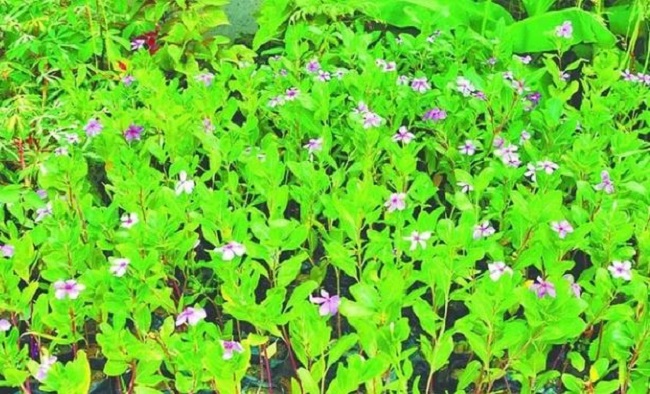 English
English

Extracts from two common wild plants decrease the capacity of the virus that causes Covid-19 to infect live cells, suggests an Emory University study. Read Further on Dynamite News:

Atlanta [US]: Extracts from two common wild plants decrease the capacity of the virus that causes Covid-19 to infect live cells, suggests an Emory University study.
The findings were published in Scientific Reports as the first large screening of botanical extracts for effectiveness against the SARS-CoV-2 virus.
In laboratory dish tests, extracts from the flowers of tall goldenrod (Solidago altissima) and the rhizomes of the eagle fern (Pteridium aquilinum) each blocked SARS-CoV-2 from entering human cells.
The active compounds are only present in minuscule quantities in plants. It would be ineffective, and potentially dangerous, for people to attempt to treat themselves with them, the researchers stress. In fact, the eagle fern is known to be toxic, they warn.
"It's very early in the process, but we're working to identify, isolate and scale up the molecules from the extracts that showed activity against the virus," said Cassandra Quave, senior author of the study and associate professor in Emory School of Medicine's Department of Dermatology and the Center for the Study of Human Health, adding, "Once we have isolated the active ingredients, we plan to further test for their safety and for their long-range potential as medicines against Covid-19."
Quave is an ethnobotanist, studying how traditional people have used plants for medicine to identify promising new candidates for modern-day drugs. Her lab curates the Quave Natural Product Library, which contains thousands of botanical and fungal natural products extracted from plants collected at sites around the world.
Caitlin Risener, a PhD candidate in Emory's Molecular and Systems Pharmacology graduate program and the Center for the Study of Human Health, is the first author of the current paper.
In previous research to identify potential molecules for the treatment of drug-resistant bacterial infections, the Quave lab focused on plants that traditional people had used to treat skin inflammation.
Given that Covid-19 is a newly emerged disease, the researchers took a broader approach. They devised a method to rapidly test more than 1,800 extracts and 18 compounds from the Quave Natural Product Library for activity against SARS-CoV-2.
"We've shown that our natural products library is a powerful tool to help search for potential therapeutics for an emerging disease," Risener said, adding, "Other researchers can adapt our screening method to search for other novel compounds within plants and fungi that may lead to new drugs to treat a range of pathogens."
SARS-CoV-2 is an RNA virus with a spike protein that can bind to a protein called ACE2 on host cells. "The viral spike protein uses the ACE2 protein almost like a key going into a lock, enabling the virus to break into a cell and infect it," Quave explains.
The researchers devised experiments with virus-like particles, or VLPs, of SARS-CoV-2, and cells programmed to overexpress ACE2 on their surface. The VLPs were stripped of the genetic information needed to cause a Covid-19 infection. Instead, if a VLP managed to bind to an ACE2 protein and enter a cell, it was programmed to hijack the cell's machinery to activate a fluorescent green protein.
A plant extract was added to the cells in a petri dish before introducing the viral particles. By shining a fluorescent light on the dish, they could quickly determine whether the viral particles had managed to enter the cells and activate the green protein.
The researchers identified a handful of hits for extracts that protected against viral entry and then homed in on the ones showing the strongest activity: Tall goldenrod and eagle fern. Both plant species are native to North America and are known for traditional medicinal uses by Native Americans.
Additional experiments showed that the protective power of the plant extracts worked across four variants of SARS-CoV-2: Alpha, theta, delta and gamma.
To further test these results, the Quave lab collaborated with co-author Raymond Schinazi, Emory professor of pediatrics, director of Emory's Division of Laboratory of Biochemical Pharmacology and co-director of the HIV Cure Scientific Working Group within the NIH-sponsored Emory University Center for AIDS Research.
A world leader in antiviral development, Schinazi is best known for his pioneering work on breakthrough HIV drugs.
The higher biosecurity rating of the Schinazi lab enabled the researchers to test the two plant extracts in experiments using infectious SARS-CoV-2 virus instead of VLPs.
The results confirmed the ability of the tall golde.(ANI)
No related posts found.